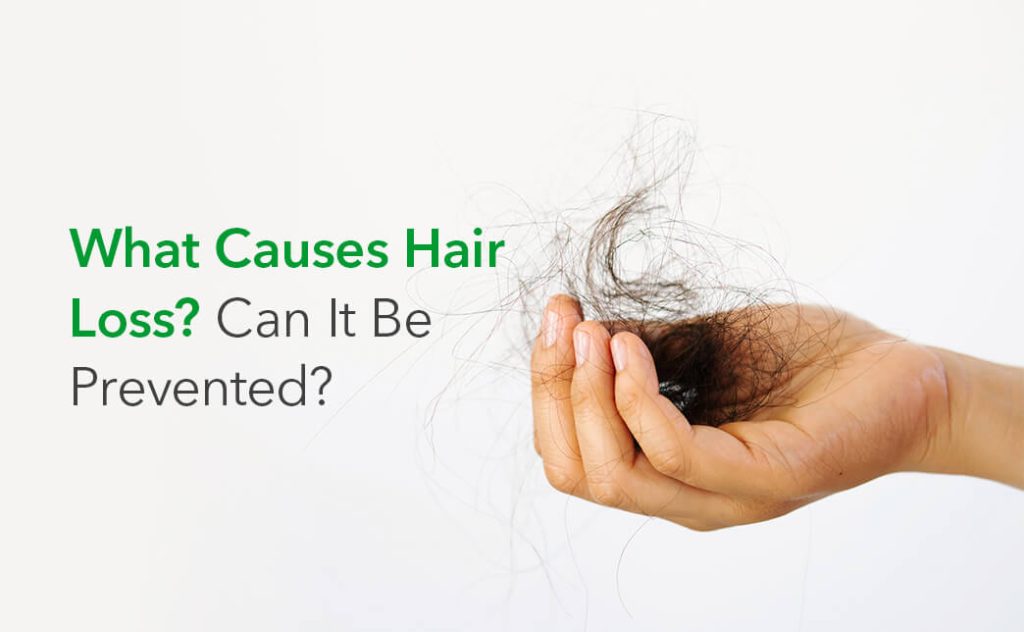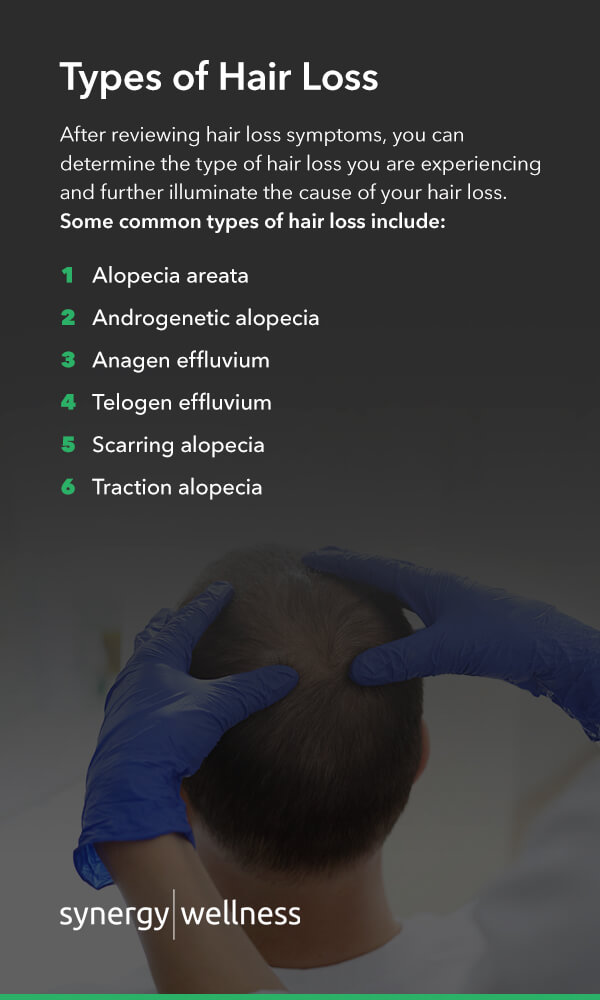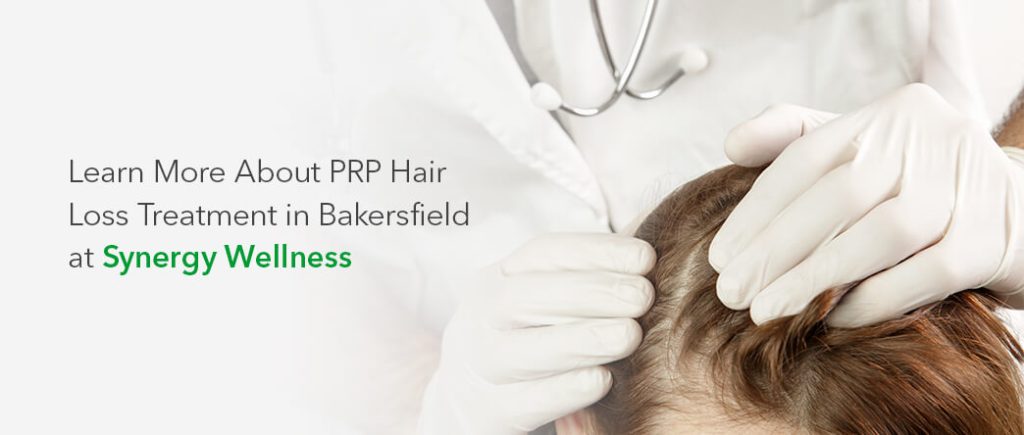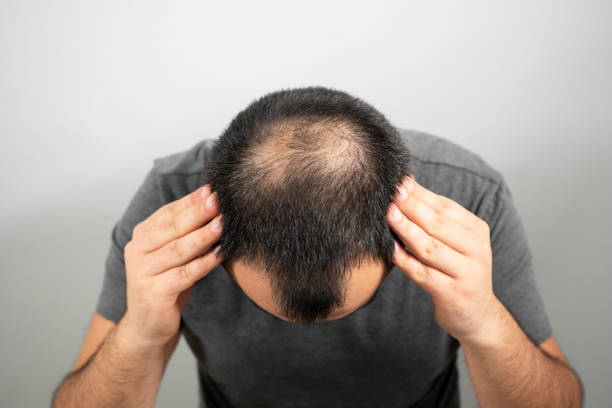
As a body part, hair has limited function, but we cherish our strands and locks anyway. Our hair influences our identity and provides an opportunity for self-expression. It is also a symbol of both comfort and youth. For these reasons and many others, it can be troubling to experience hair loss.
However, it is important to know that hair loss is normal and often temporary. You can take steps to prevent hair loss and treat it if it has already begun. We’ll tell you all you need to know about hair loss causes, how to prevent it and what you can do to treat it in what follows.

Symptoms of Hair Loss
Hair loss symptoms reveal a lot about hair loss causes. Have your symptoms occurred suddenly or gradually? Is there a pattern? Is the hair loss confined to one area or showing up in different areas of your body? The answers to these questions can help your hair loss doctor determine the best plan of attack for treating and preventing hair loss. Here are some signs of balding and hair loss:
- Gradual thinning: Gradually thinning hair can manifest in several ways. You may notice it as a widening part, a receding hairline, a slowly growing bald spot or a thinner ponytail.
- Patchiness: Bald patches in your hair can signal various potential causes, depending on their pattern and size. They can occur with an illness or infection or as a regular part of aging. These patches may appear in circular patterns or random chunks in your eyebrows, beard or top of your head. They can occur suddenly or gradually.
- Hair loosening: If you find clumps of hair on your brush or notice your drains are clogged with hair after showering, your hair is likely loosening. Although hair loosening occurs with age, it can also happen if you feel stressed. With the latter, this symptom is temporary.
- Full-body hair loss: Hair loss that occurs all over the body is often triggered by chemotherapy and other medical treatments that cause hair loss as a side effect. The hair usually grows back once treatment is complete.

Types of Hair Loss
After reviewing hair loss symptoms, you can determine the type of hair loss you are experiencing and further illuminate the cause of your hair loss. Some common types of hair loss include:
- Alopecia areata: Alopecia areata is an autoimmune disorder where your immune system attacks hair follicles, causing patches — also known as areata — to form in different sizes and areas on your scalp, eyebrows, eyelashes or elsewhere.
- Androgenetic alopecia: Sometimes called male-pattern baldness, androgenetic alopecia is a genetic hair loss condition that affects both men and women. The main symptom of androgenetic alopecia is gradually thinning hair.
- Anagen effluvium: Anagen effluvium is a rapid loss of hair, often triggered by chemotherapy or similar treatments.
- Telogen effluvium: Telogen effluvium also involves sudden hair loss but is associated with hormonal changes and physical or emotional shock.
- Scarring alopecia: Scarring alopecia results in permanent hair loss, as scars on your scalp prevent hairs from growing back. This form of hair loss can occur due to various infections like ringworm, cellulitis or other skin disorders. It can also happen if scars develop from hot combs or pulling your hair too tight.
- Traction alopecia: Pulling your hair too tight can also cause traction alopecia, but this type of hair loss is temporary.
Causes of Hair Loss in Women
Hair loss affects women and men in similar and different ways. Some hair loss causes and conditions occur with both sexes, while others are unique to women or men. Concerning women, here are some common causes of hair loss:
Hormonal Changes
Women often lose hair due to the hormonal changes that pregnancy and menopause cause. However, these hormonal changes do not always cause hair loss. For example, many women experience hair growth in new areas during menopause. The increase in estrogen during pregnancy results in thicker hair. In other cases, the hormonal changes of pregnancy and menopause do not affect women’s hair growth or loss.
More commonly, hormonal changes during menopause and after pregnancy cause hair to thin. Estrogen and progesterone levels decrease during menopause, causing your hair to grow slower and thinner. Although the increase of estrogen during pregnancy often thickens your hair, the drop back to normal levels often causes hair loss. Hair loss after pregnancy should not alarm you, as your hair is most likely reverting to its normal density.
The good news is that hair loss from hormonal changes is not necessarily permanent, even after menopause. Many women experience hair regrowth after menopause through treatment.
Tight Hairstyles
Styling your hair in ponytails, buns or braids is great — as long as you give your hair some flexibility and room to breathe. If you prefer those hairstyles taut, limit how often you wear them and loosen them when you feel comfortable doing so. Tight hairstyles put continuous tension on your hair follicles, which can cause them to break or fall out, leading to traction alopecia.
If you notice your hair starting to break or fall out from tight hairstyles, it is important to adjust your hairstyles and take better care of your hair. If the continuous tension from tight hairstyles leads to scarring, the hair loss could be permanent.
Diet and Vitamin Deficiencies
Your diet and health choices can also impact your hair density. Deficiencies in vitamin D, fatty acids, protein and iron have been linked with hair thinning. On the other side, over-supplementation of Vitamin A and E also leads to hair loss. If your hair loss is due to vitamin deficiencies, bolstering your diet with the specific vitamins you are deficient in could prevent further hair loss.
Seafood is typically high in fatty acids, vitamin D and iron, so salmon, oysters and shrimp are great additions to your diet if you want to curtail hair loss. Vitamin D deficiencies also result from insufficient exposure to sunlight, so spending more time in the great outdoors could also help with hair loss.
Over-Processed Hair
Over-processed hair occurs when you apply excess bleach, relaxer creams, perms or heat styling tools to your hair. As a result, your hair may become frizzy and have white tips at the ends of each strand. You might also experience hair loss. To prevent over-processed hair, make sure you use high-quality products and pay attention to their ingredients. You should also limit how often you bleach your hair to recommended time frames.
Hair Loss in Men
Besides normal aging, hair loss in men can be attributed to several potential causes:
Hormonal Changes or Imbalances
As with women, hormonal changes can also lead to hair loss in men. The hormone in question regarding hair loss in men is dihydrotestosterone (DHT), a more potent form of testosterone. DHT is an androgen hormone, meaning it stimulates the growth of male characteristics.
While low levels of DHT lead to less bodily hair, high DHT levels are known to shrink hair follicles on your scalp leading to male-pattern baldness, or androgenetic alopecia. As such, men with high levels of DHT hormones are more likely to experience male-pattern baldness than those with moderate to low DHT levels.

Genetics
Male-pattern baldness is also influenced by genetics. However, there is no surefire way of predicting whether you will experience such hair loss based on genetics, as a combination of hormonal balances and aging also influence hair loss. Although men inherit the gene most commonly linked with hair loss from their mother, the genetic component of male-pattern baldness comes from both parents. As such, hereditary hair loss could mean you are more susceptible to balding but does not mean you will for sure experience male-pattern baldness.
Medical Conditions and Medications
Certain medications and medical conditions can also lead to hair loss in men. Besides chemotherapy and radiation treatment, some drugs that have hair loss as a common side effect include:
- Acne medications, including Accutane.
- Anticoagulants, like Heparin, for reducing blood clots.
- Antidepressants, such as Prozac or Zoloft.
- Beta-blocker medications for lowering blood pressure.
- Medicines for lowering cholesterol, such as Lopid.
- Warfarin and other blood thinners.
Medical conditions that have hair loss as a common symptom include:
- Anemia.
- Hodgkin’s lymphoma.
- Lupus.
- Thyroid disorders, such as hypothyroidism or hyperthyroidism.
Who’s Most Susceptible to Losing Hair?
Given the causes of hair loss in men and women, three categories determining your susceptibility to losing hair include genetics, illness or infection and lifestyle habits.
Genetics
Genetics is a factor in men losing hair more than in women. However, it is still loosely linked with female-pattern baldness. For hereditary hair loss in women, you may be more susceptible to losing hair if your mother or grandmother experienced hair loss after menopause.
Men often inherit male-pattern baldness from their mother’s side. Individuals who have a maternal grandparent with male-pattern baldness may be more susceptible to losing hair than those whose maternal grandfather still has a full head of hair.
It is a myth that you only inherit hair loss from your mother’s side. Having a maternal grandparent with male-pattern baldness does not automatically indicate that you will experience the same hair loss. The reverse is also true. Having a maternal grandparent without male-pattern baldness does not mean you will not experience it, especially if your father has male-pattern baldness.
Illness or Infection
Various illnesses and infections increase your risk of hair loss. Some of these illnesses do so directly, while others cause hair loss indirectly through the medications your doctor prescribes for them.
Concerning medical conditions that directly increase your risk of hair loss, you are more susceptible to it if you suffer from lupus, anemia, thyroid disorders, polycystic ovary syndrome (PCOS) or Hodgkin’s lymphoma. You are also at increased risk of hair loss if you experience the following infections:
- Folliculitis
- Piedra fungal infection
- Ringworm, also referred to as tinea capitis when experienced on your scalp
- Scalp psoriasis
- Seborrheic dermatitis of the scalp
- Syphilis
As for illnesses that can indirectly increase your risk of hair loss through their treatments, these include:
- Anxiety or depression
- Asthma or chronic obstructive pulmonary disease (COPD)
- Cancer
- High blood pressure
- High cholesterol
Lifestyle
Your lifestyle choices can also make you more susceptible to hair loss. Some of these choices include:
- Tight Hairstyles: If you frequently wear your hair in a tight ponytail, bun or braid for extended periods, you are at higher risk of experiencing traction alopecia or scarring alopecia. Giving your hair room to breathe and flow freely will decrease your susceptibility to hair loss.
- Harsh Hair Treatments: Individuals who frequently use hair products with harsh chemicals are more susceptible to hair loss than those who use gentler products with healthy ingredients.
- UV Exposure: While the vitamin D from sunlight is healthy for your hair, too much UV radiation exposure can damage your hair and cause premature hair loss. You can reduce this risk by wearing a hat on sunny days and limiting any time spent in tanning salons to a minimum.
- Smoking: Smoking can permanently damage your hair follicles and lead to hair loss. Individuals who smoke regularly are at increased risk of hair loss.
Regarding lifestyle choices and hair loss, several myths persist. Some myths include:
- Stress leads to permanent hair loss: It can lead to temporary hair loss but is not a permanent cause of hair loss.
- Wearing a hat causes hair loss: The idea behind this myth is that wearing a hat deprives your hair of oxygen. However, this is untrue, as your hair receives its oxygen supply from your bloodstream.
- Washing your hair too much leads to hair loss: This myth is perpetuated due to losing hair in the shower. However, washing your hair simply rinses out hairs that have already fallen out.
- Cutting your hair often leads to thicker growth: This myth has its roots in puberty when we start growing body hair. Every time you shave during this life stage, your hair grows back a little thicker. However, this thicker growth is not due to shaving but simply your body growing more hair naturally.
What Are the Treatment Options for Hair Loss?
Whether you are experiencing normal hair loss or excessive hair loss, several treatments are available to slow or replace hair loss. Here are some common treatment options for hair loss:
Grafting
Also known as hair transplant surgery, grafting is one of the most common hair loss treatments. With grafting, doctors transplant hair from thicker areas of your scalp to thinner, balding areas. Grafting involves a recovery period of two to five days and involves risks of bleeding and infection. That said, it is generally effective for treating hair loss.
Medication
Common medications for hair loss treatment include minoxidil, known commercially as Rogaine, and finasteride, with the brand name of Propecia. Rogaine is over-the-counter (OTC) and comes in liquid, foam or shampoo forms. As a vasodilator, Rogaine is believed to treat hair by enlarging hair follicles. In contrast, Propecia is a prescription taken orally as a tablet. It treats hair loss by decreasing dihydrotestosterone levels in men.
Platelet-Rich Plasma
Platelet-rich plasma (PRP) is a promising regenerative treatment for hair loss that uses the platelets and plasma portions from your blood to stimulate increased hair growth. The process for PRP treatment involves three simple steps:
- Your doctor draws a vial of blood from your arm.
- They place the blood sample in a centrifuge, which separates the red blood cells from the platelets and plasma.
- They activate the platelet-rich plasma and inject it into the treatment area.
PRP treatment does not involve any significant recovery time, and most patients require approximately three treatment sessions spaced four to six weeks apart before they see full results.
How Does PRP Treatment for Hair Loss Work?
Platelet-rich plasma contains various growth factors that stimulate hair follicle activity to produce the growth of new hairs. These growth factors primarily come from the platelets in your blood. Platelets are tiny fragments of bone marrow that help with blood clot formation and wound healing. However, they also contain many important growth factors, essential for stimulating new cell growth and repair, including hair follicle cells. Plasma is the liquid portion of your blood and serves as a medium to transport the platelets where they need to go.
By increasing platelet-rich blood flow to damaged or defunct hair follicles and infusing them with growth factors, PRP treatment rejuvenates those follicles and encourages the growth of new hairs.

Learn More About PRP Hair Loss Treatment in Bakersfield
If you have further questions about PRP hair loss treatment, we encourage you to get in touch with us at Synergy Wellness in Bakersfield! Our PRP hair loss specialists would be happy to answer your questions so you can be fully informed before making a decision on PRP treatment for hair restoration.



